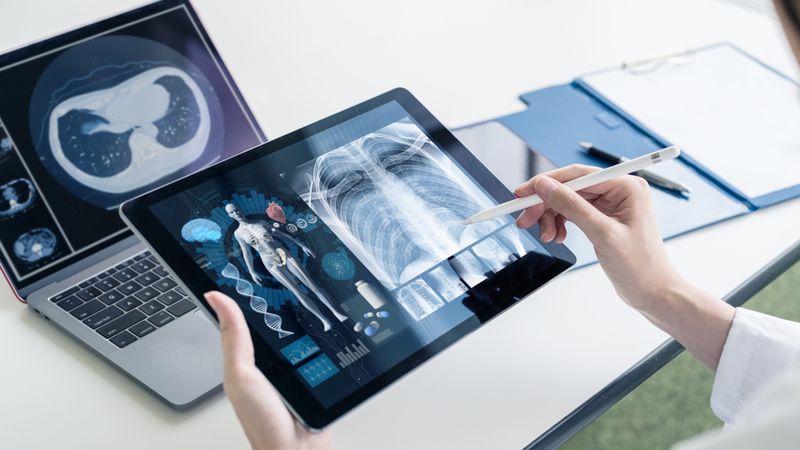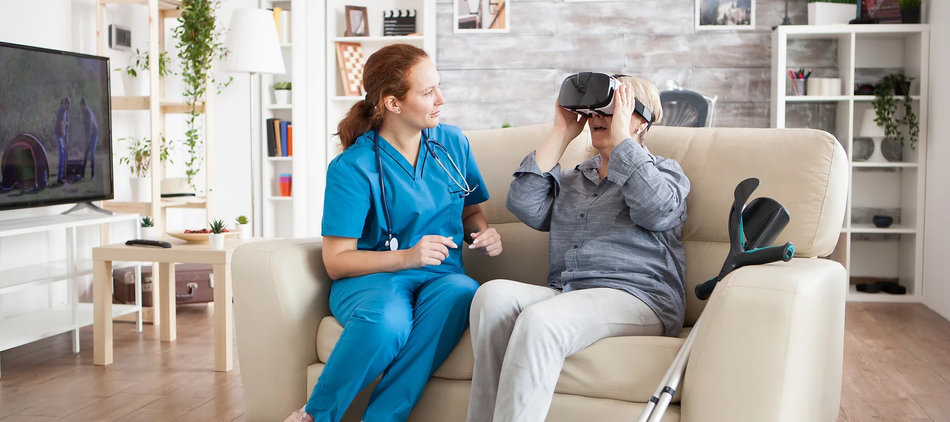Transforming healthcare with digital therapeutics
For millennia, physicians have been the first and last line of defence against illness and disease. But now through the development of digital therapeutics (DTx), technology pioneers are joining them in the battle to save lives and improve health outcomes for countless millions.
According to Statista’s digital therapeutics data, this year there will be 177.8 million patients using digital therapeutics[1], suggesting a new era of tech-driven health interventions has arrived.
This new dawn is being driven by rapid advances in software such as artificial intelligence, machine learning and natural language processing – but also improved wearable technology – which when combined, can empower patients themselves to monitor their own health, encourage behavioural change, spot problems before they worsen and provide invaluable health intelligence to medics.
Crucially, unlike some apps which may be floating around the Internet - DTx have to provide evidence-based clinical treatments. They have their own category for approval by the US Food and Drug Administration (FDA), and the growing belief that they have a significant role to play in healthcare is bringing investment, which has rocketed by 134% between 2020-2 to reach $8.9 billion USD[2]. To some degree at least, they are a form of ‘tech’ medicine.
So what’s driving the growth?
A combination of technology advances both virtual and physical, greater need and basic pragmatism is helping to spur growth in the industry.
When it comes to old vs new interventions, DTx has several advantages over traditional pharmaceuticals.
- Speed and cost. DTx can be developed much quicker than medicines. The process of bringing a drug to market can cost a drug company billions of dollars over the course of a decade, with an average cost of $2.6 billion. DTx require minimal development cost compared with pharmaceuticals (<1%), and the development period is approximately half[4].
- Ongoing support. Unlike pharmaceuticals which are simply dispensed, DTx can provide feedback on medical readings in real time, continually reporting on their own effectiveness.
- Preventative measures. By being able to monitor health and gain insights on patient behaviour, DTx have a preventative component, helping users and medical professionals spot problems before they become a bigger issue – such as worsening blood sugar, cholesterol or anxiety.
Technological drivers.
But it’s under the hood where DTx is really advancing. By their very nature, DTx are all about tailored approaches to individuals, each with his or her own lifestyle and health challenges, so it goes without saying that the development in AI has provided a significant boon in this area.
AI algorithms can predict the needs and challenges of individuals based on their medical history and previous engagement (or lack of) with the technology. It can also help predict when users may suffer particular episodes, ranging from low blood sugar to anxiety attacks - based on health readings and previous triggers.
AI can provide alerts and help steer the patient towards particular courses of action – such as taking medication or seeking further medical help. Clickotine – a digital smoking cessation app – might know a user gets cravings after a coffee, so sends them a message of support before they light up.
Virtual reality is also an area where things are developing. It can help DTx apps provide therapy in realistic virtual locations without patients having to leave their own home. One such example is Rocket VR Health, which is developing a DTx solution for stem cell patients who are isolated in their hospital rooms. Using VR to ‘transport’ them out of their hospital room to nature locations where they follow a proven therapy framework that has been digitized.
The Leva Pelvic Health System uses a VR device integrated with a mobile app to track the movements of patients with mixed urinary incontinence for home pelvic floor muscle training.
Software and hardware - the twin pillars of modern DTx solutions.
DTx tech sits broadly in two categories, that which is primarily software-driven, and that which relies on wearable technology. There is also considerable overlap between the two.
PEAR Therapeutics is just one example of software-driven DTx. The company was the first to receive approval from the FDA for a mobile digital therapeutic for opioid use disorder. Known as reSET-O, the app offers users a 12-week programme, using cognitive behavioural therapy (CBT) to help change the mindset of users.
Also harnessing software to impact change is Click Therapeutics, which has created a digital solution which it claims can prevent as well as treat migraines. Branded ‘CT-132’ the therapy’s framework is built on the company’s proprietary “Click Neurobehavioral Intervention” which uses machine learning and data science to predict personalised treatment options.
Wearable breakthroughs.
While some DTx rely on software to perform their roles, others lean more on physical technology such as sensors. It’s no secret that the wearables sector has faced challenges when it comes to keeping the size/power ratio of devices viable. A wearable designed to monitor and track health information could, after all, conceivably have large power demands.
But advances in edge technology, energy harvesting, power management and wireless charging are just some of the improvements which are making wearables a viable component for DTx. And there are no shortage of developers utilising wearables in their DTx solutions right now.
Freespira, for example, is a DTx for treating panic disorders and PTSD. It integrates the use of a portable sensor that can measure the expulsed CO2 levels to determine if a panic attack is occurring before implementing a protocol for relieving the anxiety-induced symptoms associated with panic attacks. In clinical trials, 91% of patients reported ‘significant reductions’ in symptoms.
Also harnessing wearables is the FDA approved DTx for managing insomnia called NightWare. By utilizing a biosensor in a smartwatch, it incorporates an app which vibrates on the arm when it detects if the user is having a nightmare.
A range of DTx products have also been developed for diabetes that also harness wearable tech. The Dario Blood Glucose Monitoring System is one such system and consists of a smart meter and app, which enables patients to perform blood sugar testing. It can also provide live coaching and real-time data analytics for personalized diabetes support[5].
Read more about the evolution of wearables in another recent article.
Challenges ahead
Despite the growing investment and belief in the promise of DTx, the sector is not without its challenges.
One is that DTx are not simply devices but treatments. In the USA and in Europe, DTx are classified as medical devices. But since they are actually tested in clinical trials and their approval by regulatory agencies refers to specific therapeutic indications, their research and development process is similar to that of conventional drugs[6]. This can be difficult and time-consuming. There would appear to be a need in this instance for greater collaboration between the medical and technology industries to improve and refine R&D processes.
Another issue centres around data privacy. DTx by their nature collect the health data of patients and there is still significant reticence among the general population and medical professionals about ensuring the security and proper use of that information.
While the cash is flowing into DTx and there is a growing desire to see it deployed alongside traditional medicine, questions will need to be addressed around privacy and R&D cost and timescales if it is to continue its current impressive rate of growth.
References
[1] https://www.statista.com/statistics/1223250/number-of-digital-therapeutic-users-worldwide/
[2] https://www.cbinsights.com/research/report/digital-health-trends-2021/
[4] https://www.jacc.org/doi/abs/10.1016/j.jacbts.2016.03.009
[5] https://aiche.onlinelibrary.wiley.com/doi/full/10.1002/btm2.10536


